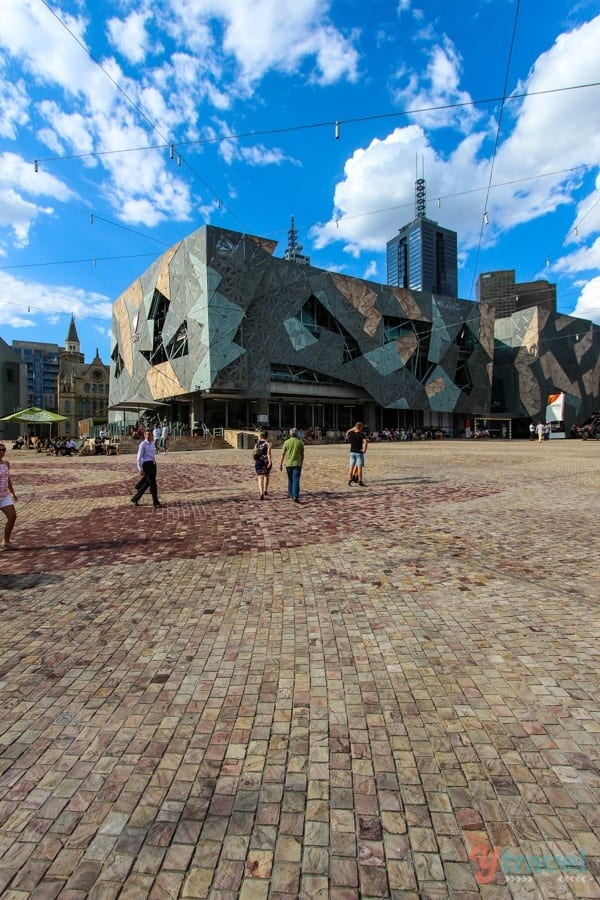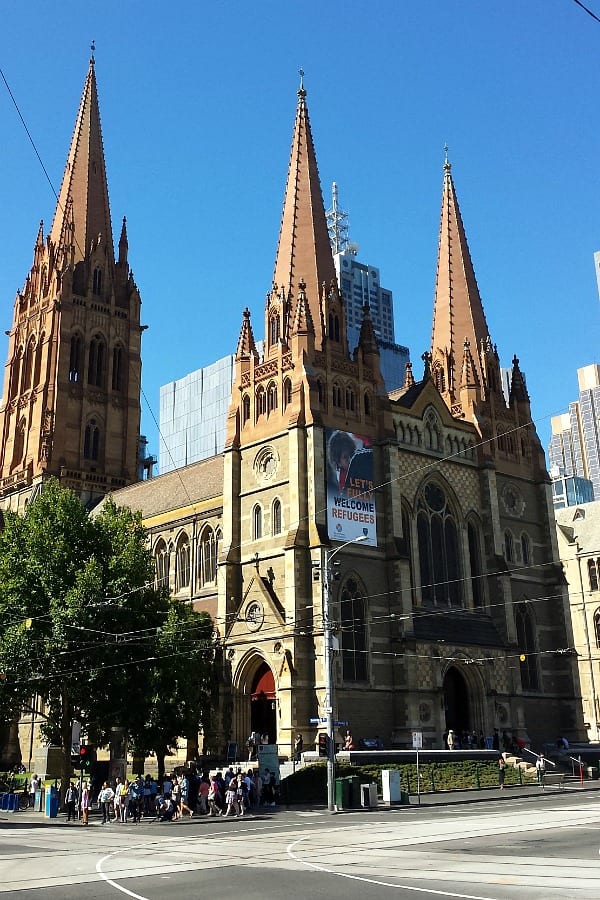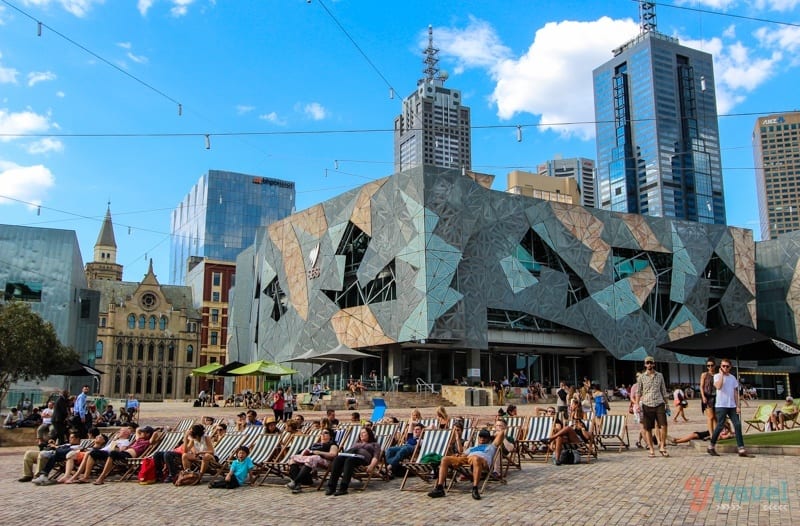This post may contain affiliate links. We may receive a small commission, at no cost to you, if you make a purchase. Read Disclosure.
Nestled in the heart of Melbourne is Federation Square, one of the main squares the city, sitting on the corner of Swanston Street and Flinders Street, in the central business district.
The square is famous for its iconic buildings, restaurants, cafes, and bars, as well as being a popular venue for events and festivals.
It’s a bustling place, with a hubbub of people 24 hours a day, 7 days a week, flocking to this modern piazza to explore its wonders and attractions.
But why is this place so well known? And what are some of the best things to do in Federation Square? In this guide, we share everything you need to know about this area of cultural significance.
History of Federation Square
It was just a square. An open square with a bunch of elaborately designed, albeit attractive and interesting, buildings surrounding it.
We had arrived during the middle of the day and Fed Square was relatively empty and seemed a little lackluster.
Melbourne doesn’t have the visual wow factor, so you’re forced to dive deeper into its soul. Once you do that, you find yourself slowly slipping into LOVE.

Contrary to what you might think, Federation Square, or Fed Square as the locals call it, is a relatively modern attraction in Melbourne.
Its construction began in 1997, and it was officially opened on December 12, 2002. It was designed to be a vibrant public space that would reflect Melbourne’s diverse cultural heritage and contemporary spirit.
The design was established by a competition, which was won by a team of architects led by Lab Architecture Studio.

The winning design was inspired by the idea of a “city square for the 21st century,” and features two open squares (St. Paul’s Court and The Square) plus a covered space called the Atrium.
The Atrium is one of the major public spaces in the precinct populated with galleries, specialty shopping and cool cafes.

The design is characterized by its bold, angular architecture and its use of a variety of materials, including concrete, steel, and glass. The concrete deck in which it’s built on sits above one of Melbourne’s most busy railway lines.
The…
Click Here to Read the Full Original Article at y Travel Blog…
